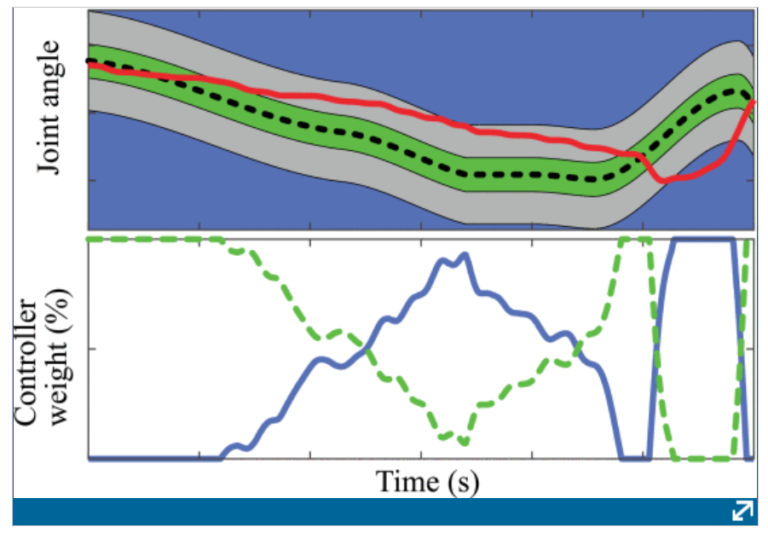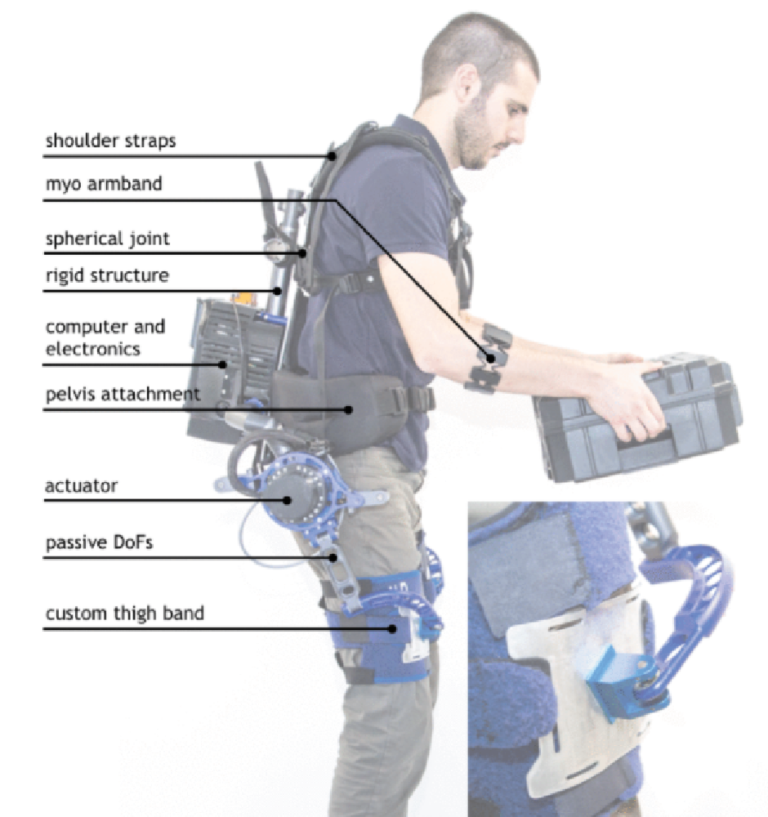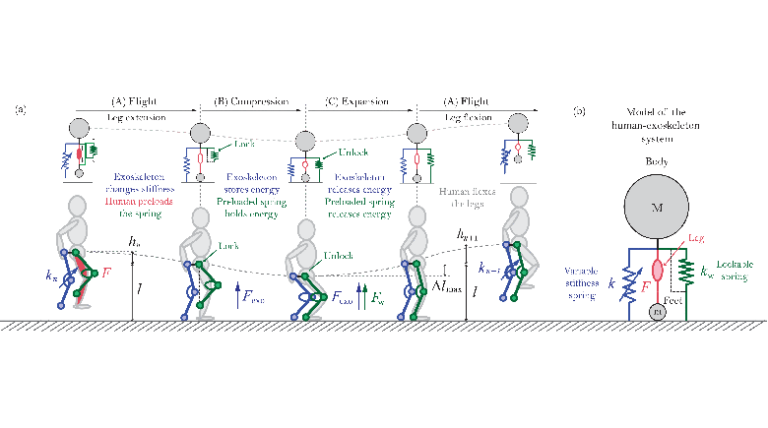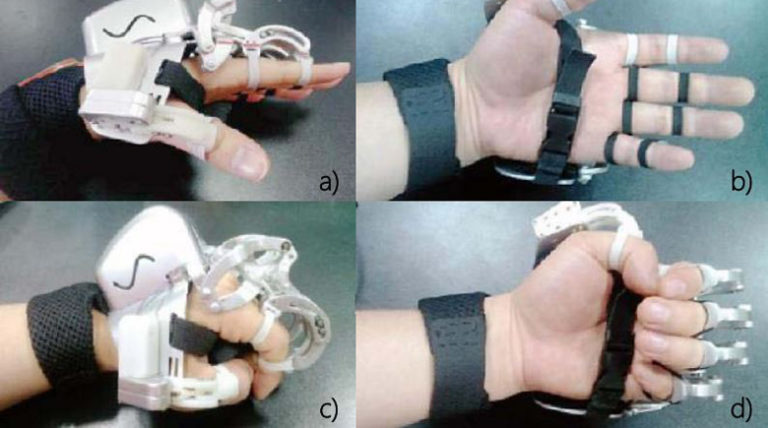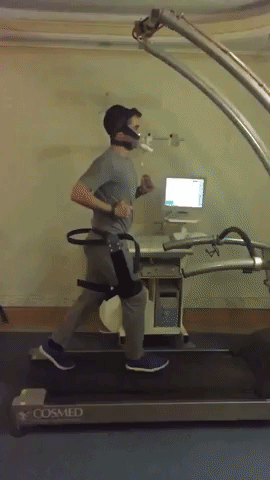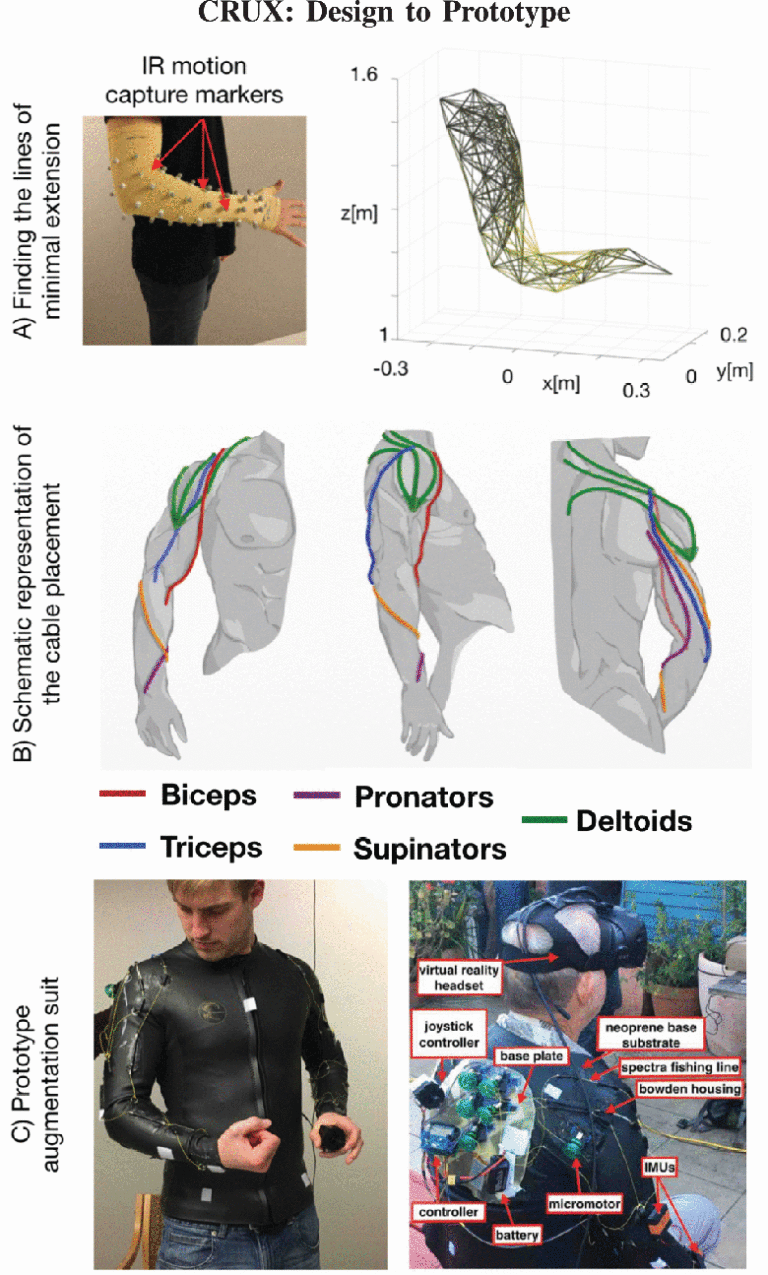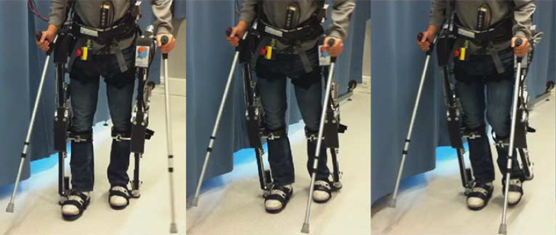Most people with cerebral palsy (CP) suffer from impaired walking ability and pathological gait patterns. Seeking to improve the effectiveness of gait training in this patient population, this study developed…
read moreIn this paper, we present the design, control, and preliminary evaluation of the Symbitron exoskeleton, a lower limb modular exoskeleton developed for people with a spinal cord injury. The mechanical…
read moreShoes were invented to provide user comfort using rubber soles, despite marginal improvement in human mobility. Unlike shoes, current lower-limb exoskeletons use fixed stiffness springs to store and recycle…
read moreImprovement in hand function to promote functional recovery is one of the major goals of stroke rehabilitation. This paper introduces a newly developed exoskeleton for hand rehabilitation with a…
read moreIn this paper, we present a new perspective to design an unpowered exoskeleton for metabolic rate reduction in running. According to our studies on human biomechanics, it was…
read moreFor stroke survivors and many other people with upper-extremity impairment, daily life can be difficult without properly functioning arms. Some modern physical therapy exercises focus on rehabilitating people with…
read moreACCESS PAPER DATA READ FULL ARTICLE ON IEEE XPLORE Abstract Powered exoskeletons can empower paraplegics to stand and walk. Actively controlled hip ab/adduction (HAA) is needed for weight shift and…
read more
